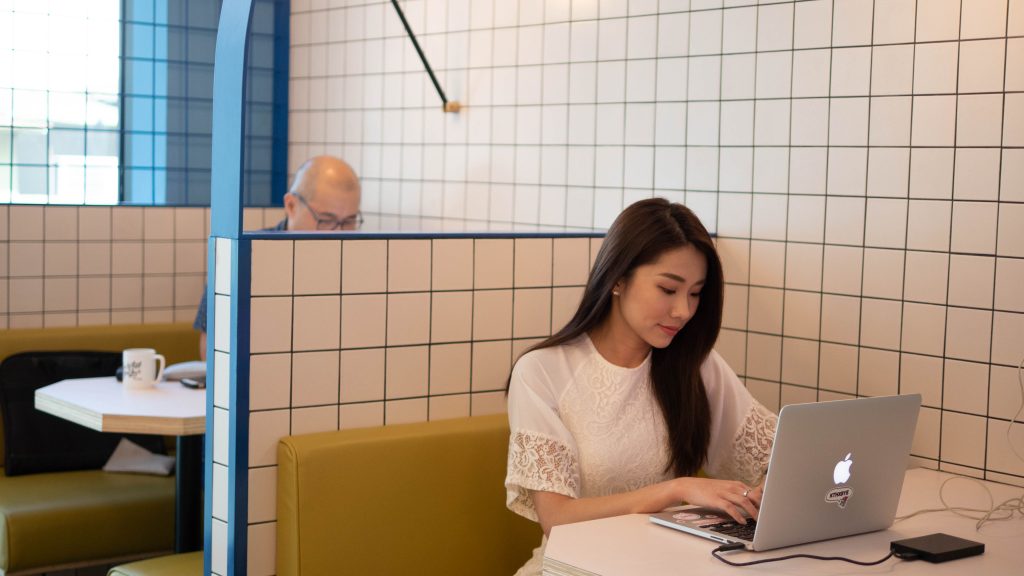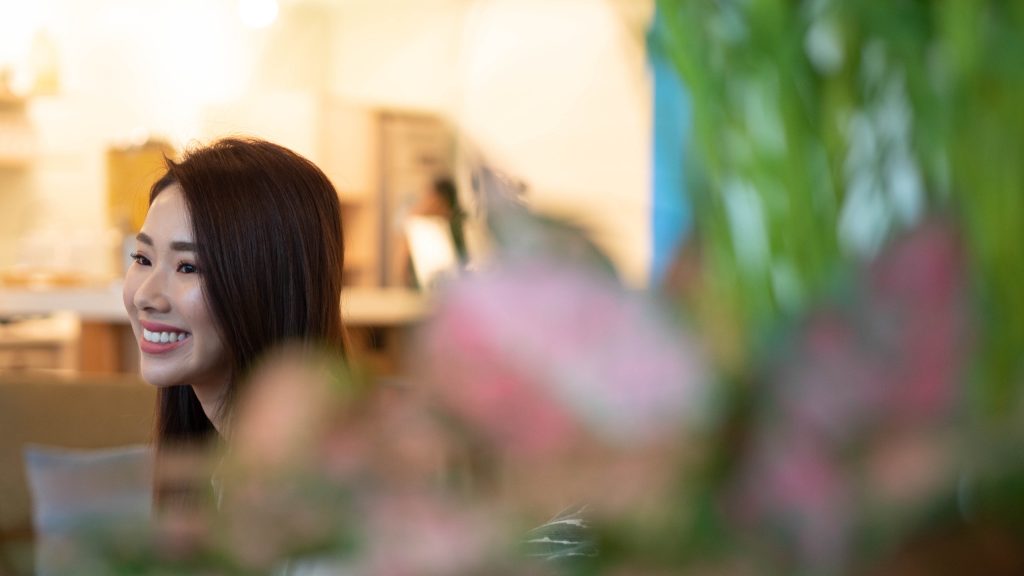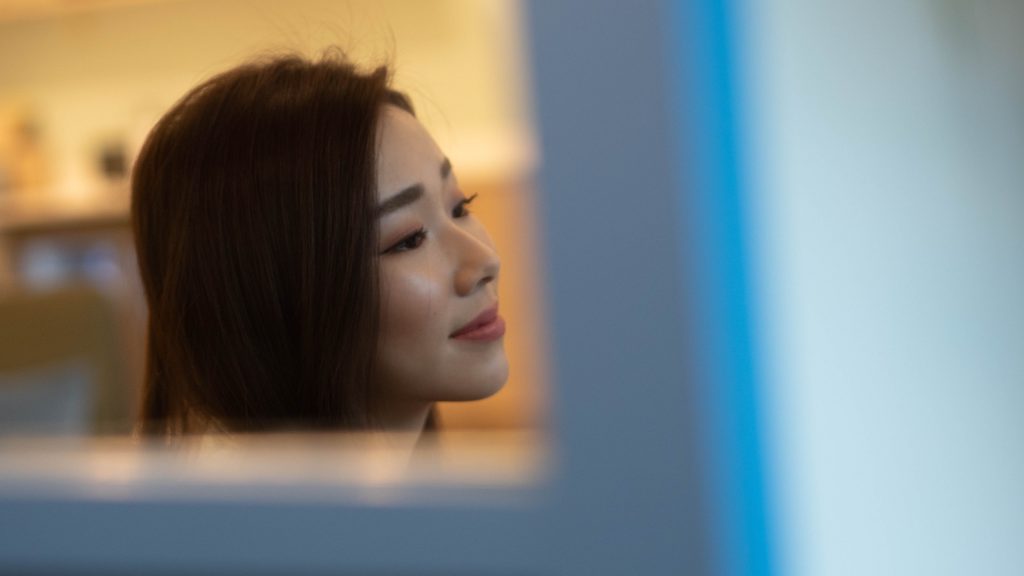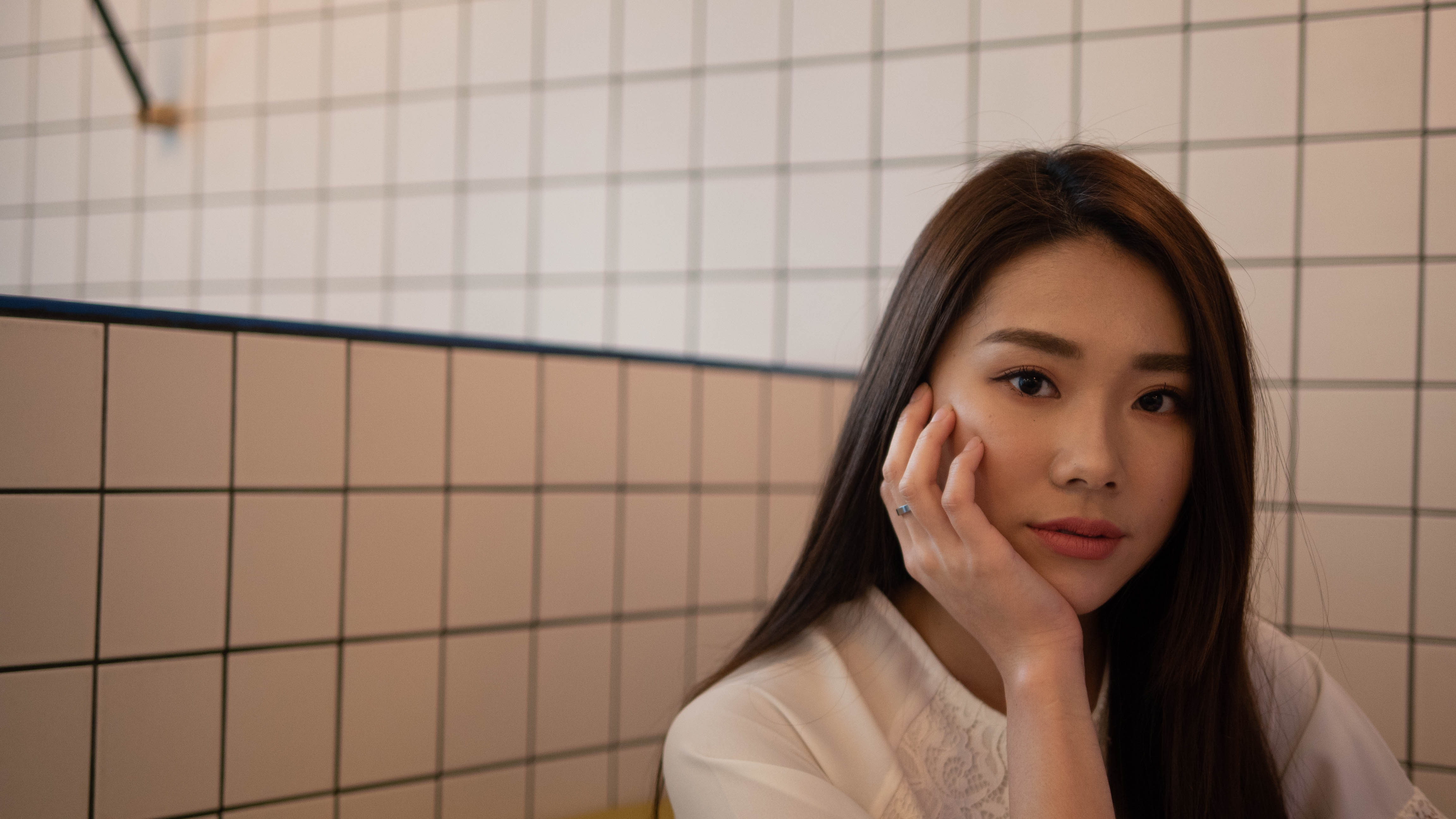It is a delicate juggling act of exuding poise and gravitas, while appearing as relatable as the everyday person. When one of them speaks to you, you can feel a kinship that you ordinarily only have with family and close friends.
So it’s a little unexpected when Mongchin Yeoh, better known as Mongabong to her 200,000 Instagram followers, tells me,“The only reason why I don’t mind being honest with you guys is because Rice Media wrote something about us before, and it wasn’t a very positive one.”
She’s referring to an article on the phenomenon of ‘Instagram boyfriends’ that we ran 2 years ago. While we didn’t single her out in the story, her face, along with her boyfriend’s, was used as the cover image.
“People like me and Xin Lin, we don’t make money off our boyfriends. In fact, we actively say no to brands who want to involve them.”
Just last month, Yeoh walked down the aisle with that same boyfriend. But unlike other influencers, she wanted her wedding to be the one aspect of her life untouched by sponsors.
“Unlike Melissa C. Koh’s wedding, right?” I ask.
“To each his own,” she replies, a knowing smile implying her refusal to name and shame.

A quick trip to Yeoh’s Instagram feed and you will be greeted by calm, almost tranquil pastel colours, mostly of pink and beige. In almost all of her photos, she is dressed suitably for the occasion in outfits you’d feel comfortable with your daughter wearing. Meanwhile, her trademark comforts you like a warm hug.
This is in direct contrast to Booby Thirst Traps (BTT), with whom it is likelier that you cop a peek of their areola before you find out what their favourite colour is. As such, the hordes of young female followers look up to them as role models. This has resulted in them being more successful than BTTs.
Compared to BTTs whose Instagram posts are defined by the amount of skin they show, GND Influencers are supposedly more marketable, giving brands “likes” that are more valuable and useful.
If you think about it, this makes perfect sense. The people who frequent the Instagram pages of BTTs are predominantly lustful men who probably don’t spend any money buying the products being advertised, regardless of how many of these posts they ‘like’. This includes lingerie or female fashion products.
“It’s so uncomfortable not knowing what those photos are used for,” Yeoh says.
Highlighting the reason why she doesn’t feel comfortable revealing too much in her photos, she winces as she adds, “I’m very sure that even the mildest thing like short shorts are already being used for such things.”
Having recently covered a story on insidious Telegram group chats where EDMW members circulate photos of scantily clad women, and seen Yeoh’s pictures pop up on more than one occasion, I can attest to this.

Yet due to the exponential speed at which BTTs can grow their followings on social media, many are tempted to sashay down a similar path to fame. While there is nothing wrong with this, some of these aspiring influencers are barely teenagers.
Yeoh points out that girls as young as 13 are starting to post more revealing photos, in a bid to gain more traction on social media.
In fact, a story published by ST in 2017 shows that this phenomenon was already pervasive back then. It is alarming to think that prepubescent girls are posting suggestive photos in their pursuit of fame. If they learn that they get rewarded with male attention if they show more skin, they could grow up with skewed understandings of their own sexuality, pegging their self-worth to their physical appearance.
“We’re already seeing younger girls dressed skimpily, they might see it as a shortcut to fame. They grow (on social media) a lot faster than people who don’t. So there definitely is an incentive to go for that kind of an image,” Yeoh explains, elaborating on how BTTs might not be the best role model for young women.

“They (BTTs) have high following and user engagement rates. That’s something that we cannot ignore. A lot of these brands are still going after these numbers, whether or not it’s quality likes, but they have to report to their bosses.”
Even then, it appears that more BTTs are pivoting from ‘raunchy’ to ‘dignified’ in order to increase their marketability with brands.
“I feel like a lot of BTTs actually started showing a lot more substance than what they used to. They’re fashionable, and it’s no longer about just being in bikinis, they would also try and show how they can dress,” Yeoh elaborates. She explains that these influencers are now more than just thirst traps for men, and can even offer women an alternative to look up to.
This could be due to the fact that GND types of influencers seem to be raking in more business, and BTTs are now realising their inability to provide quality likes of the Mongabong variety.

The 26-year old portrays a wholesome image not unlike Yeoh’s. Recently, her collaboration with Italian shoe manufacturer Superga sold out within a day, with most snapped up by female teenagers. It might be easy to imagine Kylie Jenner’s cosmetic products selling out in minutes, but a product selling out after being championed by a local influencer is unheard of.
But these levels of success are not without any drawbacks. For starters, Yeoh tells me that she has to be “switched on” almost every hour of the day.

“When you film something you need to be 20x more enthusiastic for it to show on screen. It’s very hard for me to be myself like that, and it would look very boring.”
As you might imagine, having to keep up appearances every hour of the day can be quite draining. For Yeoh, one of the biggest struggles she faces is knowing when to turn off, and to live life in the present; not to fall into the occupational hazard of looking at everything with the eyes of a curator.
“Sometimes I get so caught up with work that I realise my entire life becomes about work. When that happens, I’ll give myself a few hours break and really indulge in my dramas, or go on a trip.”
Understanding the importance of work-life balance, Yeoh has started saying no to jobs that require her to work on weekends—the time that she rests and spends time with her husband and her parents, who work in the wholesale lingerie business.
While her husband has handled her fame well, her parents were worried that their job would be a source of embarrassment for her.

“They do wholesale to different shops, so sometimes they will bring a big amount of underwear or bras to these shops and I think sometimes they get recognised and they ask “are we embarrassing you?” she tells me, with an expression of near-guilt.
Perhaps, one of the reasons why Singaporeans might find the Mongabong brand so alluring is because it doesn’t feel like one. As an influencer, her job is basically to sell us products that brands pay her to. However, she is successful not because she is a pretty face in front of the camera, but because the Mongabong story is relatable to all of us.
Like many Singaporeans, she was just another person struggling to make it in the rat race. And even though she ultimately broke free from that mould in her pursuit of becoming an influencer, she still faces problems that all of us do.

We posture in front of nosy aunties who ask us if we are doing well in school, or at work. Heck, even our parents give in to this pressure and feel compelled to play up our minor successes. There is so much pressure to be a great success here, and Yeoh is a much-welcomed breath of fresh air. When this honesty comes from a complete stranger who gives you a peek into her shortcomings, people are instantly drawn in.
On the other hand, BTTs in with their curvaceous bodies and barely-there-underwear sell us the false reality that everything is perfect. What we need influencers to remind us is that even though things appear to be perfect, they are not. It is people like Yeoh who do this, reminding Singaporeans that it’s okay if you’re imperfect, or if you didn’t do well enough to be a doctor, banker, lawyer, or even an entrepreneur.
Ultimately, this is what Singaporeans want. The average Singaporean is, after all, simply average. And they want experiences that which tell them influencers are simply human, just like us.







